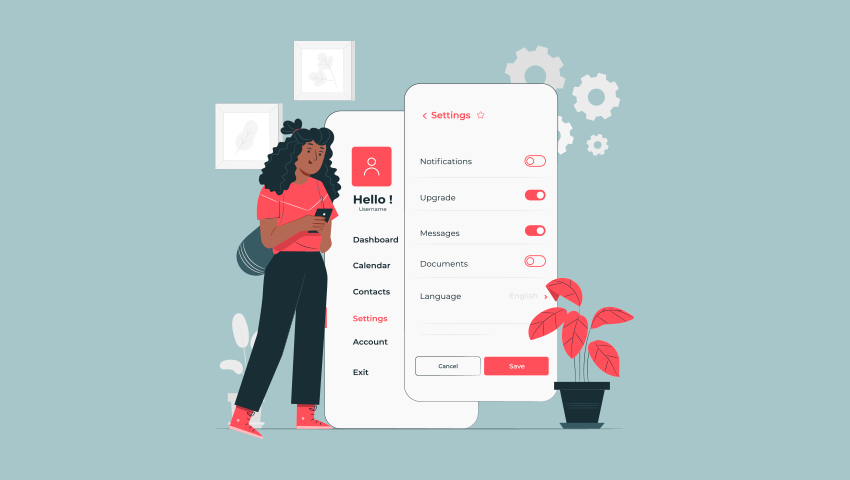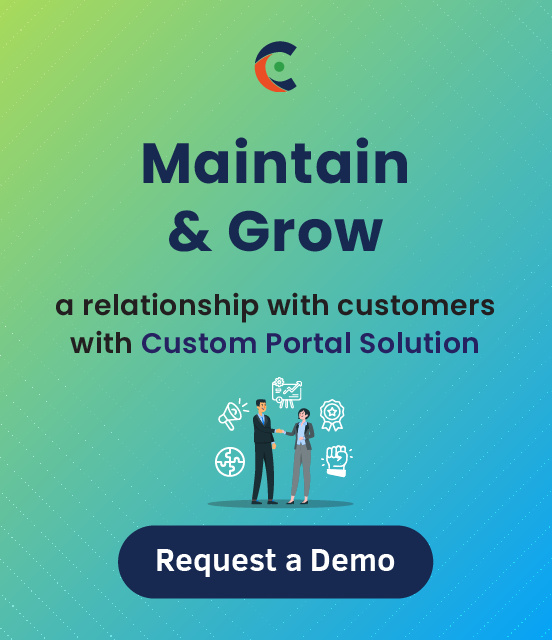Millennials and Gen Z are a crazy bunch. And this crazy bunch makes up for 62.5% of the total world population. 62.5%. That’s more than half of the world’s population. So it is okay to assume that 6 out of 10 of your customers are either millennials or Gen Z. And if your product’s target audience lies between 25-35 demographic, then you have 10 out of 10 millennials or Gen Z on your hands. After constantly fighting with ‘n’ number of competitors, you manage to acquire them as your customers only to lose them for a silly thing like not having a self-service option. And it is not that hard to get customer self service portals right.
And that’s what we are going to talk about in this blog.
– Customer portal features
– Customer portal best practices
But before we get into the features, let’s first try and understand the role of customer self service portals in an organization. Be it a small or medium-sized organization or an enterprise-level, a customer portal acts as a bridge between you and your customers. It gives them a chance to get to know you a little better. As an organization, you will have control over how you want to develop the relationship and to what extent you want it to grow. You can aim at short-term relationships as well as long-term partnerships based on the nature of your business. A customer self service portal fills that long-existing gap that now more than ever needs to be filled.
Apart from that, there are many ways a portal benefits your organization.
– Streamlines client communication by providing a unified interface to your teams as well as clients to communicate. No more messy email threads and calls.
– Proper customer data management as the customers themselves update their personal details from the customer portal.
– No redundant tickets as all the knowledge articles covering basic questions about your products and services will be shared with them through the customer portal.
– Simplifying your ticket generation, monitoring, resolving, and everything related to tickets by giving a proper platform to all the stakeholders.
– Builds your brand and makes sure you are seen in the positive light by all your customers.
To garner these benefits, you have to have the right features in place in your customer portal.
So what are those right features?
Let’s check them out.
Must-have Customer Portal Features
– Option suggestion: If your business is clothing or footwear, you can learn from your customer’s purchase history so that when they shop again, the portal can suggest sizing based on past purchases. This is especially helpful if you sell based on brands since they have consistent sizing.
– Cross selling: If you own an estore related to lifestyle products, cross selling is quite easy. You can sell other products, and accessories on it. If you sell electronics, you can cross sell cables or product accessories.
– Quick query reports: If there are similar queries coming in from customers for over a week, your support staff should be able to get that data in a report so they can address it better by publishing a new knowledge article.
– Data Visualization: Customer interaction can teach you a lot. And the portal can collect a lot of data that you can then study. With reports like how many people raised similar questions, the number of people who chose a particular color, etc. can give you deeper insights into your business.
– Feedback: A short feedback regarding the interaction can go a long way in helping you make changes to the portal and training your staff.
The customer portal features mentioned above are some of the advanced features but here’s a list of some basic portal features you can have if you are just starting out:
– Secure login
– Knowledge base
– Case deflection
– Proposal generation
– Interactive and informative dashboard
– Product catalog
– Real-time notifications
– Integrated calendar
Now, let’s get into the Customer portal best practices that all businesses must follow to get the best out of customer self service portals.
Customer Portal Best Practices
– UI Facilitating UX: The UI of a portal is crucial. It should be inviting, clutter free, and lead customers to the help they may need. While designing the UI of a portal, you should answer “how can I make this easier for a customer?”, rather than “how can I sell them my product?”.
– Categorization: A customer self service portal can have categorized areas of pain points a customer may have so that they can directly look for a solution in a specific place. For anything that cannot be categorized or is common, you can have FAQs and a miscellaneous section.
– Human Transition: Customer portals are great for categorizing various types of tickets, or interactions that customers come for. But for certain queries, a human interaction may be required. One of the best things you can do is have a human take over after a certain point in the interaction.
– Unsubscribe: if your customer doesn’t want to receive promotional emails, give them the option to unsubscribe in the customer portal itself. You can have this option in the profile section from where they are maintaining their personal details. And don’t hide the button. It will lose you the customer permanently.
CRMJetty has been in the portal business for over a decade now, and we have seen a number of things our customers have requested over time to build into their custom portals. It has been humbling to see the requests various businesses have when it comes to making a software that puts their customers at the center.
We take all that and build customer web portals and more. We are learning from our customers just like they are learning from theirs. If you need to make a custom customer portal, we will design a custom one, with a human touch. You can talk to us about it here.
Writer’s Note: This piece of writing is in collaboration with Roma Amarnani.
All product and company names are trademarks™, registered® or copyright© trademarks of their respective holders. Use of them does not imply any affiliation with or endorsement by them.







